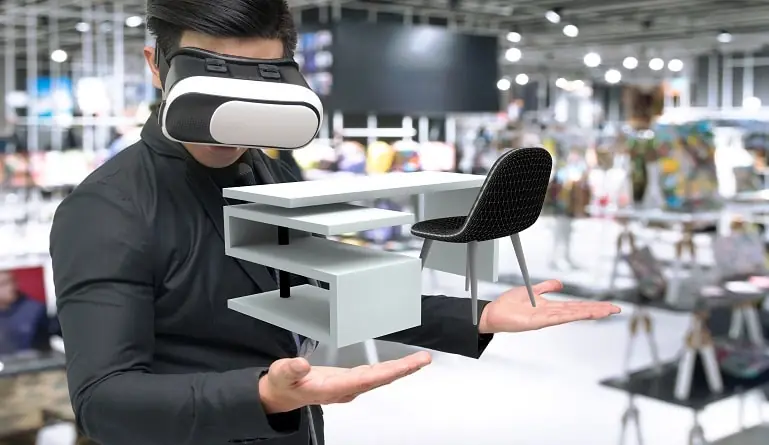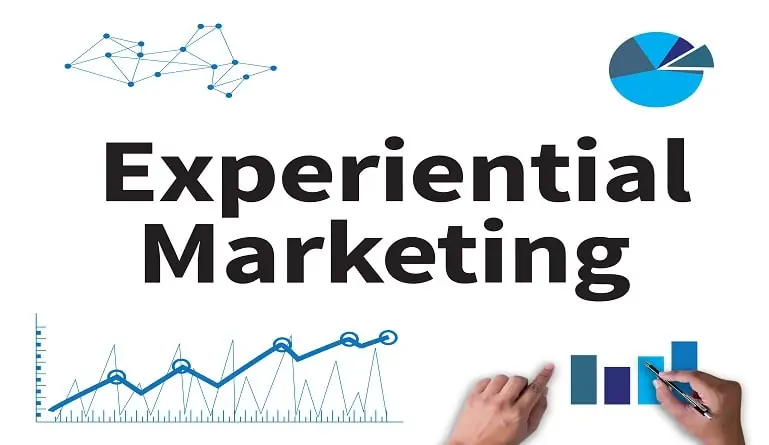Use VR to stand out from the competition, drive engagement, and build long-term relationships with your audience
In a hyper-connected world, capturing – and holding on to – consumers’ attention is becoming increasingly challenging. Traditional marketing methods often struggle to leave a lasting impression. This is where virtual reality (VR) comes into play. By harnessing the power of VR technology, marketers can create immersive experiences that captivate audiences and drive engagement, conversion, and brand loyalty.
This article will explore how to leverage VR for experiential marketing campaigns, from conceptualization to execution. Research shows that VR headset shipments are growing at 130.4%, indicating significant potential in this space.
Immersive, Interactive, and Sensory: The Power of VR
At its core, VR transports users to digital environments that feel remarkably real, fostering a sense of immersion that traditional marketing mediums can’t match. This immersion is a game-changer for marketers, as it empowers you to create experiences that go beyond mere advertising and instead forge genuine connections with consumers.
One of VR’s key strengths is its interactivity. Unlike passive media consumption, such as television ads or print campaigns, VR puts users in the driver’s seat, empowering them to explore and interact with content meaningfully. Whether it’s navigating a virtual store, participating in a branded game, or interacting with virtual characters, the interactive nature of VR fosters a sense of agency and engagement that keeps users actively involved in the experience.
Moreover, VR can uniquely engage multiple senses simultaneously, creating a truly sensory-rich experience. From stunning visual landscapes to lifelike sounds and haptic feedback, VR stimulates the senses in ways that evoke genuine emotional responses.
Defining the Goalpost for Virtual Reality Experiential Marketing
Too often, marketers make the mistake of piloting VR, only to have it forgotten as a one-off campaign without any measurable ROI. Integrating virtual reality (VR) into marketing campaigns requires careful planning and consideration. Here are key factors to remember:
1. Audience demographics
Different age groups, demographics, and psychographics may respond differently to VR content. Conduct market research to identify the characteristics and preferences of your target audience, ensuring that your VR experiences resonate with them.
2. Audience engagement
VR experiences should offer something unique and valuable to users, whether it’s an immersive storytelling experience, a virtual product demonstration, or an interactive game. By providing content that aligns with audience interests and needs, you can maximize engagement and create a memorable brand experience.
3. Measurable objectives
Setting specific, measurable objectives allows you to evaluate the effectiveness of your VR campaigns and make data-driven decisions. For example, you might set objectives such as increasing the number of VR app downloads, the duration of VR sessions, or the conversion rate of VR-driven sales.
4. Brand alignment
Ensure your VR experiences align with your brand identity, values, and messaging. VR should enhance and reinforce your brand image rather than detract from it. By maintaining consistency across all touchpoints, you can strengthen brand recognition and build trust with your audience.
5. Integration with overall marketing strategy
Finally, consider how VR fits within your broader marketing mix and complements other channels and tactics. For example, you might use VR to amplify the reach and impact of a product launch event at a trade show. This is key to maximizing VR’s impact and achieving greater synergy across your marketing efforts.
The VR Toolkit for Experiential Marketing Success
When selecting VR technology for experiential marketing, it is essential to align the technology with your marketing objectives, target audience, and creative vision. Consider the level of interactivity, immersion, and engagement you want to achieve with your VR experiences, and choose hardware and software solutions that support those goals.
The VR hardware landscape encompasses a variety of devices, including standalone headsets, smartphone-based VR systems, and tethered VR headsets.
- Standalone headsets, such as the Oculus Quest series and the HTC Vive Focus, offer convenience and portability, making them ideal for experiential marketing activations and events.
- Smartphone-based VR solutions, like Google Cardboard and Samsung Gear VR, provide a more accessible entry point for users but may offer limited capabilities compared to standalone or tethered systems.
- Tethered VR headsets, such as the Oculus Rift S and the HTC Vive Pro, deliver high-fidelity experiences with powerful graphics and immersive tracking but require a dedicated PC for operation.
In addition to hardware, VR experiential marketing relies on software platforms and content creation tools to bring immersive environments to life. Leading VR software platforms include Unity and Unreal Engine, which provide powerful development tools and workflows for creating interactive VR experiences.
You will also want to use content creation tools like Adobe’s suite of products (e.g., Adobe Premiere Pro, Adobe After Effects). These enable creators to produce high-quality 360-degree videos and immersive content for VR.
Additionally, familiarize yourself with VR content distribution platforms such as Oculus Store, SteamVR, and Google Play Store. These channels will allow you to distribute and monetize VR experiences for a global audience.
Step-by-Step Guide to Virtual Reality Implementation
Embarking on a virtual reality (VR) implementation for experiential marketing involves several key steps to ensure a successful launch and ongoing engagement. Here’s a step-by-step guide:
1. Pre-launch
Begin by developing the concept for your VR experience. Consider your marketing objectives, target audience, and creative vision to craft a compelling story that resonates with users.
Storyboarding is an essential part of this process, helping to visualize the flow of the VR experience and identify key interactive elements. Collaborate with VR content creators and developers to bring your concept to life, leveraging their expertise in immersive storytelling and technical execution.
Focus on creating high-quality content that immerses users in your brand narrative and aligns with your marketing goals.
2. Launch
Once your VR experience is ready, it’s time to deploy it across various marketing channels. Determine the most effective distribution channels for reaching your target audience, whether it’s through your website, social media platforms, VR app stores, or live events.
Promote your VR experience through targeted marketing efforts, including email newsletters, social media teasers, and influencer partnerships, to build anticipation and drive traffic. Ensure the VR experience is optimized for different devices and platforms to maximize accessibility and reach.
3. Post-launch
After launching your VR experience, gathering user feedback and measuring engagement is essential to evaluate its effectiveness. Implement methods for collecting user feedback, such as surveys, focus groups, and social media listening, to gain insights into user preferences, satisfaction, and areas for improvement.
Analyze key performance indicators (KPIs) such as engagement rates, time spent in VR, and conversion metrics to assess the impact of your VR campaign. Use this data to refine your VR experiences and optimize future campaigns for maximum impact and effectiveness.
Conclusion: Why VR Experiential Marketing Is Not a Flash in the Pan
Virtual reality presents marketers with a game-changing opportunity to create unforgettable brand experiences that resonate with consumers on a deeper level. By leveraging VR technology’s immersive, interactive, and sensory nature, you can stand out from the competition, drive engagement, and build long-term relationships with your audience. Top brands are already tapping into these possibilities, as seen in recent VR marketing examples.
The bottom line is that it may not be wise to miss the chance to harness the power of VR for experiential marketing—your brand’s future success may depend on it.





